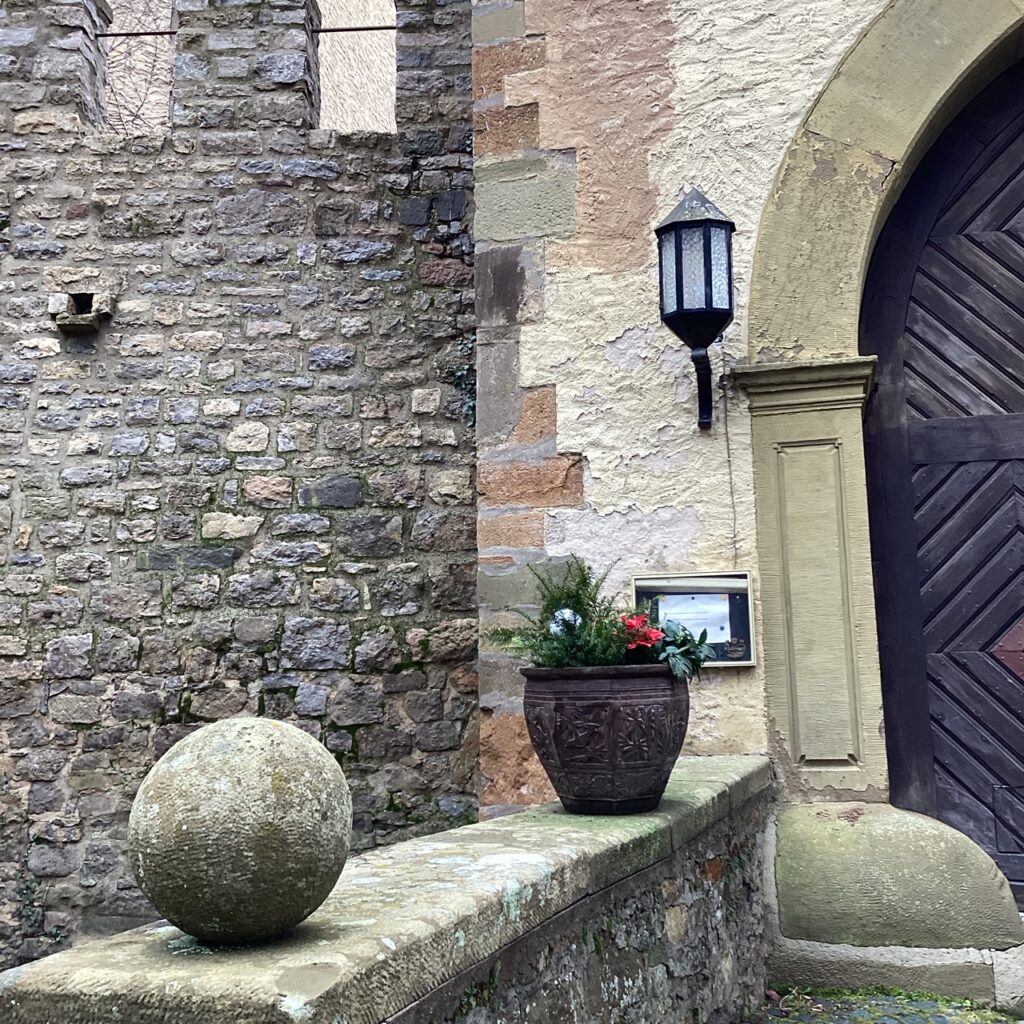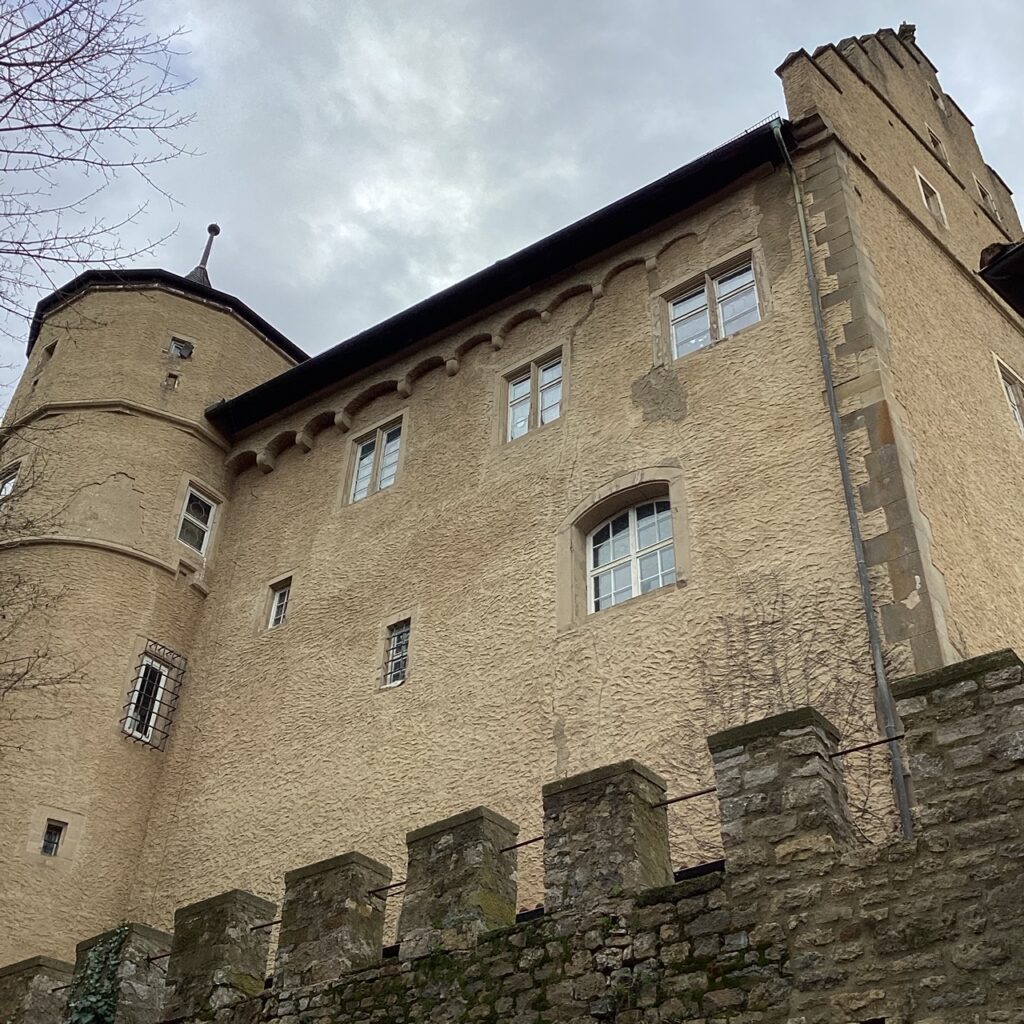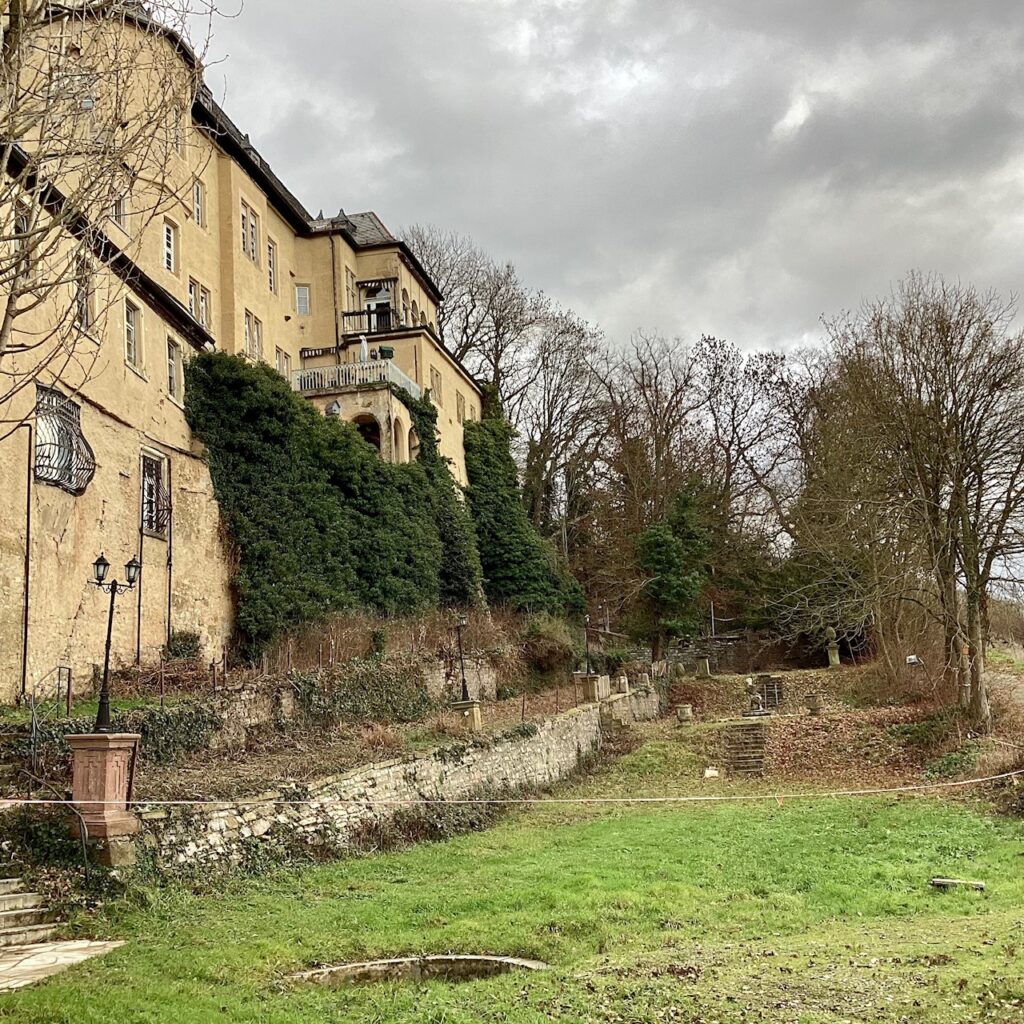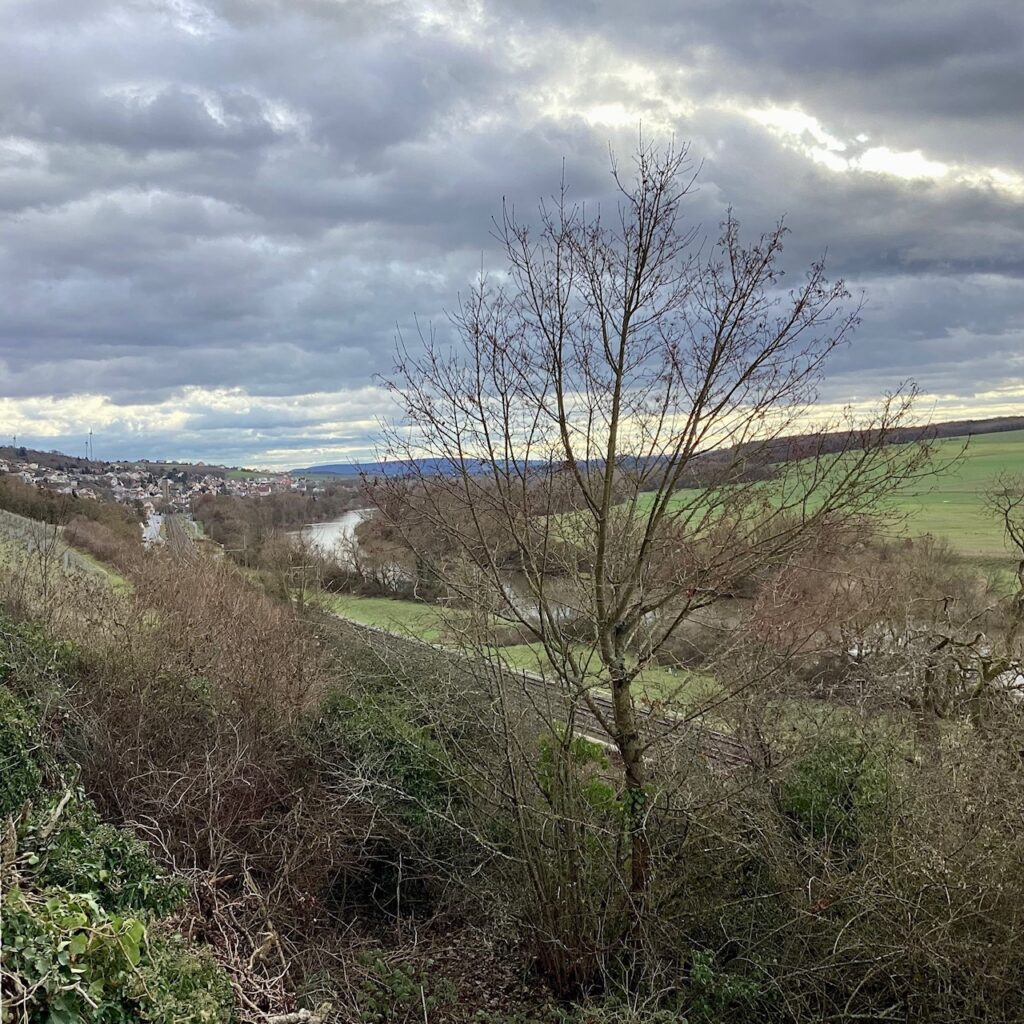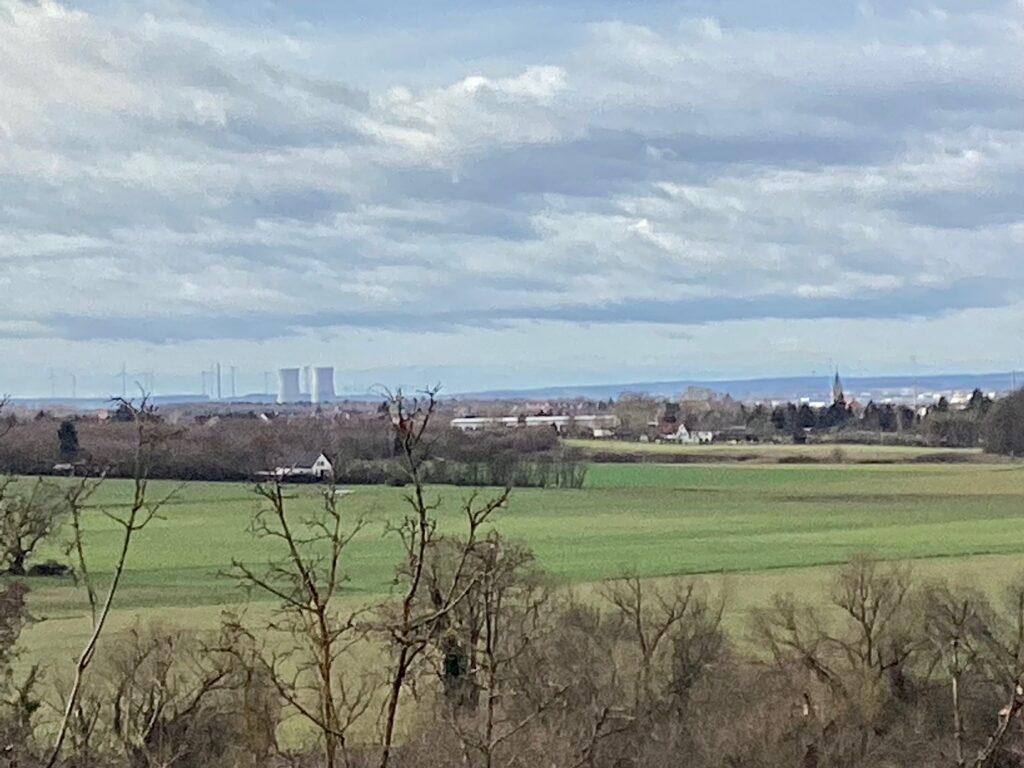After we checked out of our vacation rental in Barr, we stopped at the pâtisserie (cake shop) once more to load up on some Americano coffee and croissants while sitting in the sun.
We decided to take the leisurely route home, and stopped in Mittelbergheim to explore it a bit.
We liked it so much that we have plans to spend our next get-away in this village. This photo was taken on the outskirts.

As we walked around, we stumbled upon these tulips in the middle of a vineyard row.
It was just a single row of flowers… among hundreds of others without any.
In the center of the village, we saw this stately door of a 16th century winery.
On our way back through main street, we spotted a stork’s nest.
Mittelbergheim, you will see us again in autumn.
To learn more about the Alsace, see Strasbourg, France: Plus Colmar and Central Alsace















